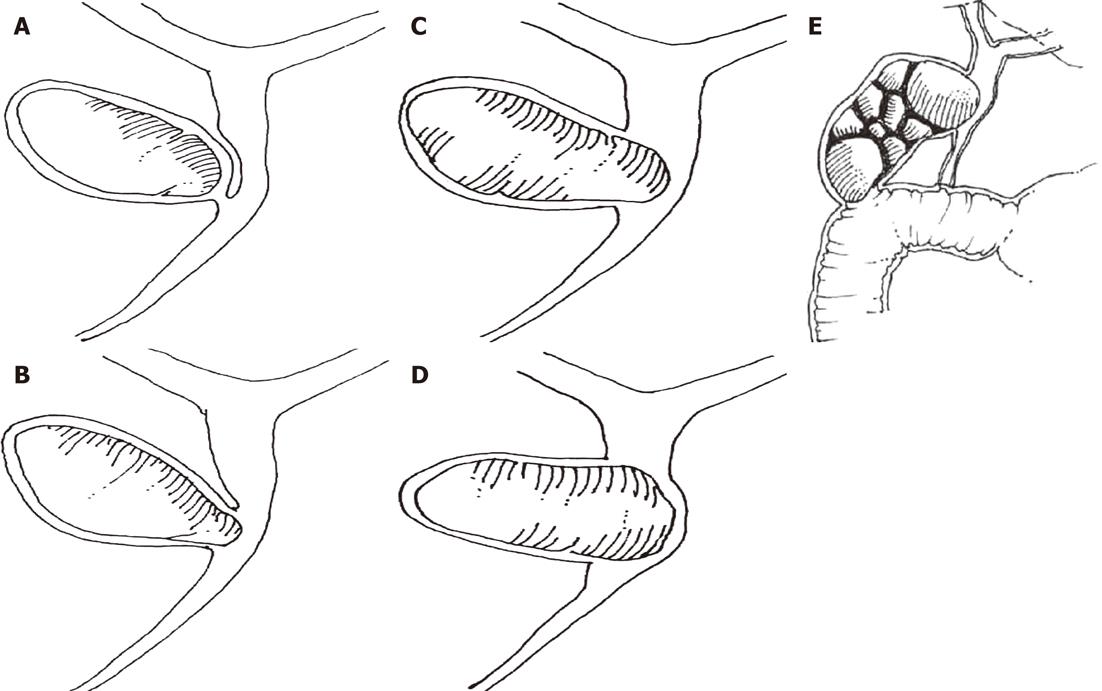Copyright
©2012 Baishideng Publishing Group Co.
World J Gastroenterol. Sep 14, 2012; 18(34): 4639-4650
Published online Sep 14, 2012. doi: 10.3748/wjg.v18.i34.4639
Published online Sep 14, 2012. doi: 10.3748/wjg.v18.i34.4639
Figure 5 Mirizzi syndrome type I to type V.
A: Mirizzi type I is the extrinsic compression of the common bile duct by an impacted gallstone; B: Mirizzi type II consists of a cholecystobiliary fistula involving one third of the circumference of the bile duct; C: In Mirizzi type III, the cholecystobiliary fistula compromises up to two-thirds of the circumference of the bile duct; D: In Mirizzi type IV, the cholecystobiliary fistula has destroyed the bile duct wall, and comprises the whole circumference of the bile duct; E: Mirizzi type V corresponds to any type of Mirizzi associated with a bilioenteric fistula with or without gallstone ileus (original drawings from World Journal of Surgery 2008; 32, pages 2239 to 2241)[4].
- Citation: Beltrán MA. Mirizzi syndrome: History, current knowledge and proposal of a simplified classification. World J Gastroenterol 2012; 18(34): 4639-4650
- URL: https://www.wjgnet.com/1007-9327/full/v18/i34/4639.htm
- DOI: https://dx.doi.org/10.3748/wjg.v18.i34.4639









